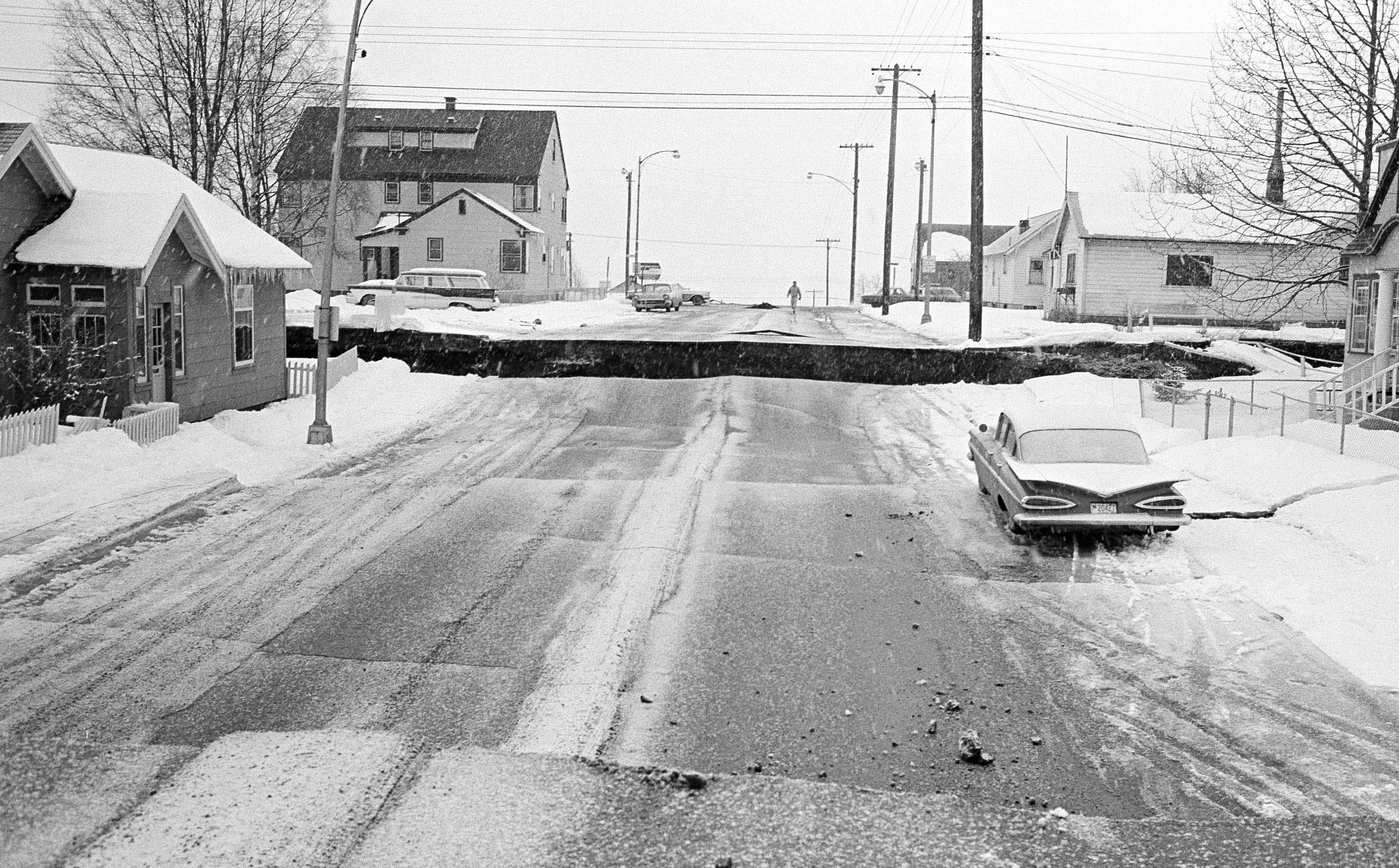

The aftermath of the Great Alaska Earthquake and Tsunami led to the creation of the NOAA National Tsunami Warning Center in Palmer, Alaska. Out of great catastrophe arises innovation and a new hope for the future of disaster preparedness. Army Corps of Engineers spent about $110 million dollars repairing infrastructure, rebuilding communities, and clearing debris. President Lyndon Johnson declared the entire state of Alaska a major disaster area a day after the earthquake. The earthquake and ensuing tsunamis caused about $311 million in damages in 1964 (about $2.3 billion today). The Government Hill Elementary School in Anchorage was torn apart in a landslide created by the Great Alaska Earthquake. Towns such as Whittier, Alaska, were inundated by tsunami waves before the earthquake had even subsided. Of the 139 deaths attributed to this event, 124 were directly caused by the tsunamis. Though this hazardous event developed the moniker of the “Great Alaska Earthquake,” it was actually the ensuing tsunamis that did the greatest damage and took the most lives. Seiches, a sloshing of water back and forth in a small body of water, were observed as far away as Louisiana, where a number of fishing boats sank in a harbor. Transoceanic tsunami waves swept across the Pacific and reached as far away as Hawaii and Japan. Tsunamis caused loss of life, extensive flooding, and damaged harbors along the North American Pacific Northwest coast. Scientists measured a wave runup of 220 feet in the Valdez Inlet.

The tsunamis created by the earthquake reached land within a few minutes of the ground shaking and engulfed some areas as much as 170 feet above sea level. This sudden displacement of the ocean floor, along with earthquake-induced landslides, generated massive local tsunamis that resulted in 70 percent of the fatalities in southern Alaska. At this boundary, the Pacific Plate slides beneath the North American Plate, causing the majority of Alaska’s earthquakes, including the 1964 earthquake.Īlaska’s continental shelf and North American plate rose over 9 meters during the earthquake. More Than Just A QuakeĮarthquakes and tsunamis can happen along any coastline, at any time of the year, but Alaska is particularly prone to them because it sits on the convergence of two tectonic plates-the Pacific Plate and the North American Plate. Water mains and gas, sewer, telephone and electrical systems were all damaged or destroyed due to the landslides. Massive landslides were triggered by the quake near downtown Anchorage and several residential areas, damaging or destroying about 30 blocks of dwellings and commercial buildings.

Ground failures are an effect of seismic activity in which the ground becomes very soft and acts like liquid, causing landslides, spreading, and settling. The epicenter of the Great Alaska Earthquake was about 12 miles north of Prince William Sound and 75 miles east of Anchorage.ĭue to the long duration of the earthquake, catastrophic ground failures occurred. Aftershocks from the quake continued for three weeks. The powerful tremors lasted for nearly five minutes and were felt over a large area of Alaska and in parts of the western Yukon Territory and British Columbia. The devastating 9.2 magnitude earthquake and subsequent tsunamis ravaged coastal communities and took over 139 lives. history struck Alaska’s Prince William Sound. local time, the largest recorded earthquake in U.S. Recent quakes above magnitude 1.On Ma(UTC) at 5:36 p.m. 7.2 on Saturday, at 7:48 pm (GMT -11) – 61 mi S of Sand Point, Aleutians East, Alaska, USA 5.4 on Wednesday, at 5:13 pm (GMT -8) – 26 mi S of Sand Point, Aleutians East, Alaska, USA 1.3 | 63 Km W of Happy Valley, Alaska - Strongest quake today: Mag. A moderate magnitude 5.0 earthquake occurred in Bering Sea, Alaska, USA, 10 hours ago.

There were also 82 quakes below magnitude 2.0 which people don't normally feel. In the past 24 hours, Alaska and the Aleutian Islands had 1 quake of magnitude 5.0 and 8 quakes between 2.0 and 3.0.


 0 kommentar(er)
0 kommentar(er)
